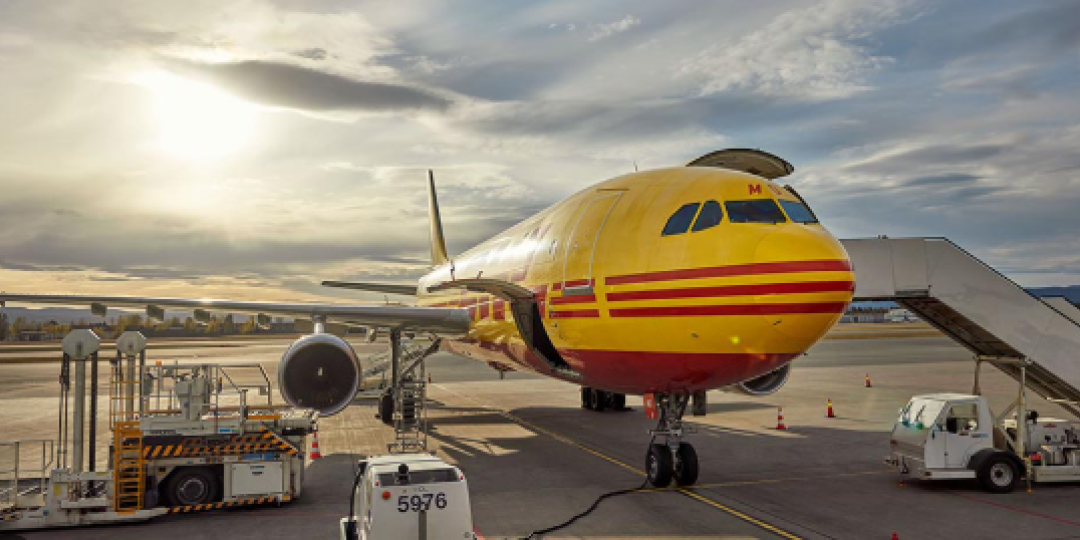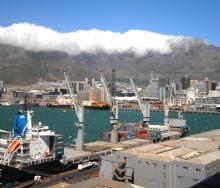A suspension of certain shipments to the United States in response to a sharp regulatory shift in US customs requirements has been announced by express cargo freighter, DHL.
The measure, effective from this Monday April 21, affects business-to-consumer (B2C) parcels destined for private individuals with a declared value above $800.
The change follows the US government's decision to lower the threshold for formal customs clearance from $2 500 to $800 – a move that has significantly increased the volume of parcels requiring detailed processing.
Air Cargo News reports that DHL said the sudden change had placed immense pressure on customs operations across the express delivery industry, leading to substantial delays.
In a statement, the company explained that it was working to rapidly expand its clearance capacity.
However, due to the scale and immediacy of the regulatory change, shipments exceeding the $800 threshold, regardless of their origin, were likely to face multi-day delays.
DHL emphasised that the suspension was necessary to uphold its service standards while managing the intensified customs workload.
The temporary halt applies exclusively to high-value shipments addressed to private individuals. Business-to-business deliveries and parcels valued below $800 sent from companies to individuals remain unaffected.
Looking ahead, further disruption may be on the horizon.
From May 2, the White House is set to eliminate the de minimis exemption for packages from China and Hong Kong, which currently allows items under $800 to enter the US duty-free and with minimal inspection.
Although similar measures were postponed in February due to inadequate customs infrastructure, the US government now appears determined to proceed.
The implications for the global e-commerce sector, especially air cargo, remain uncertain. While some analysts expect a significant downturn in shipment volumes, others argue that the low cost of many goods from Asia may cushion the blow.
Delays in processing and higher delivery costs could nonetheless diminish the appeal of online shopping from these regions. In anticipation, many Chinese e-commerce firms are reportedly exploring alternative routes, such as building US-based warehouses, increasing ocean freight usage, or routing shipments through Canada and Mexico.
Meanwhile, the broader trade environment continues to unsettle small importers in the US. A recent update from logistics platform Freightos described the latest series of tariff announcements – including reciprocal levies and policy reversals – as a source of widespread confusion and anxiety among businesses.
According to survey data collected shortly before a 90-day freeze on certain tariffs, small importers rated their concern at an average of 8.9 out of 10, with over 60% selecting the highest level of alarm. More than half expressed uncertainty over the US administration’s future tariff strategy, and one-third of respondents reported halting shipments altogether. Others have begun seeking new sourcing regions or delaying decisions until further clarity emerges.
Freight volumes appear to be adjusting in real time. Container rates from China to Long Beach have reportedly dropped 16% since reciprocal tariffs were enacted on April 9, while prices from markets like Taiwan and Vietnam remain elevated – a sign that importers are already diversifying their supply chains.
Despite a brief reprieve offered by the tariff freeze and electronics exemptions, the trade outlook remains volatile. New proposals under consideration – such as port call fees for Chinese vessels – are expected to be reviewed but could resurface as part of a broader Maritime Action Plan.
For now, US importers face the challenge of navigating shifting trade rules, disrupted supply chains, and growing cost pressures. As one business told Freightos, while some shipments had been expedited ahead of key deadlines, operations must continue, even amid the mounting uncertainty. – SOURCE: STAT Media Group.













